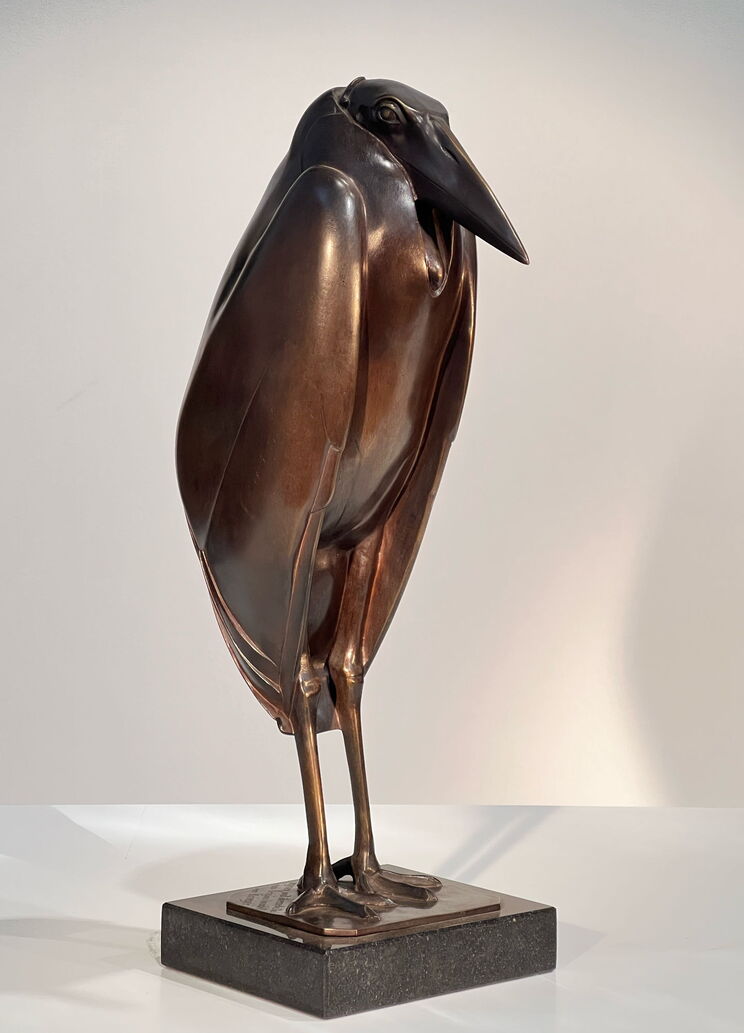Wilhelm Krieger
† 1945 Herrsching am Ammersee
Wilhelm Krieger (1877–1945) was a German sculptor and draughtsman and is regarded as one of the formative figures of early modern sculpture. After training at the Royal School of Applied Arts and the Academy of Fine Arts in Munich, Krieger first worked in the studio of the sculptor Adolf von Hildebrand, whose strictly structured approach to form left a lasting mark on his own style. From these influences, Krieger developed a distinctive sculptural language in which proportion, rhythm and inner calm take precedence.
A central focus of his work lies in animal sculpture. His figures avoid decorative exaggeration and achieve their presence through reduction and compositional clarity. Works such as the “Marabou”, the “Pelican”, or the “Reclining Antelope” are among the most important animal sculptures in German sculpture around 1920. Many of these works were cast at the historic Kunstgießerei Lauchhammer, where Krieger’s fine modelling and subtly treated surfaces could be realised with particular precision.
In addition to animal sculpture, Krieger also created portraits and funerary monuments. His works were regularly shown in exhibitions in Munich, Berlin and Dresden, and entered important collections. Krieger was a member of the Deutscher Künstlerbund and received several awards. He died in 1945 in Munich. Today he is considered one of the leading representatives of a sober, classically oriented current of modernism that mediates between traditional form and a new understanding of reality.
